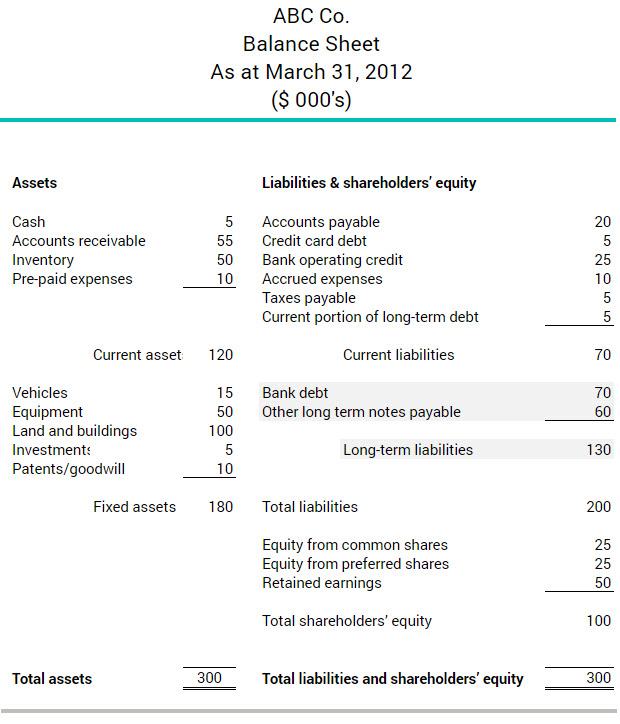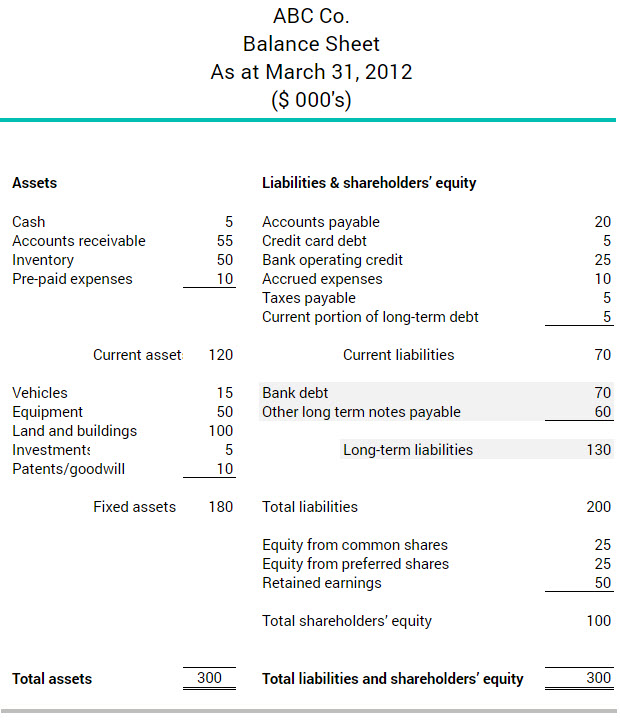Long-term liabilities (long-term debts)
Long-term liabilities, also called long-term debts, are debts a company owes third-party creditors that are payable beyond 12 months. This distinguishes them from current liabilities, which a company must pay within 12 months.
On the balance sheet, long-term liabilities appear along with current liabilities. Together, these represent everything a company owes. Payment of these debts is mandatory.
Because long-term liabilities are payable beyond 12 months—often for many years—companies tend to use them to finance assets that are also enduring in nature, such as land, buildings and equipment. Payment and other details of these debts are found in the notes to the financial statements included with the balance sheet.
More about long-term liabilities
The balance sheet below shows that ABC Co. had $130,000 in long-term liabilities as of March 31, 2012. With $1.40 in long-term assets for every $1 in long-term debt, ABC Co. has a healthy balance of long-term liabilities and long-term assets.

